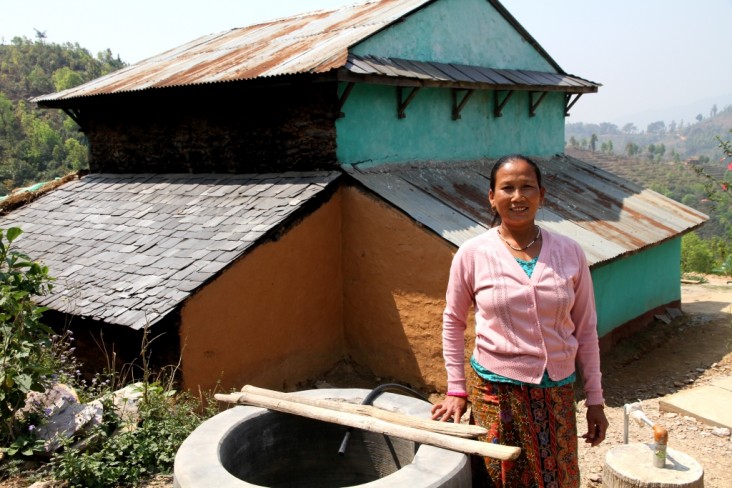
April 2014—In western Nepal’s Banke district, the Duduwa River surrounds the Farm Tole village on three sides. As picturesque and convenient as this may appear, the river also makes the village vulnerable to floods. Over the years, monsoon flooding has become progressively more serious, with land along the river being washed away every year.
For the predominantly poor Dalits and subsistence farmers who make up the village’s population, this threatens lives and livelihoods. Like much of Nepal, locals here depend on rainfall for agriculture. With increasingly erratic monsoons, farmers are beginning to see unreliable crop production and chronic losses.
"Our village was inundated with a huge flood in 2006. Eleven houses were swept away by the flood,” recalls Shambhu Nath, 52. “Every other year, there were floods that eroded our fertile lands and made life difficult. We wanted to do something to protect ourselves, but did not know what or how.”
With the help of the U.S. Government's Global Climate Change (GCC) Initiative, which is led by USAID, Farm Tole is on the cusp of transforming itself. Through USAID’s flagship GCC project in Nepal—called Hariyo Ban, or Green Forests—communities like Farm Tole are coming together to identify their most pressing risks and develop sound solutions to address them.
In Farm Tole, the project, which began in 2011, first helped establish a community learning and action center—where residents are learning about climate change and its impacts on their health and the environment, and helping to shape and implement a community adaptation plan.
Some of the new actions being taken include planting cactus and bamboo along a one-mile stretch of the Duduwa River, helping bind the soil, slow the currents and reduce the risk of soil erosion. With their farmlands better protected, locals were trained in off-season commercial vegetable farming so they could make the most of their land and improve their income.
Today, residents of Farm Tole are producing asparagus seeds for medicinal purposes, with plans to produce the seeds on a commercial scale and establish a seed processing plant. USAID is supporting the purchase of a grinding machine for asparagus roots to be packaged along with seeds for sale in the market. Nepali officials are now getting involved to ensure its sustainability.
Residents are also reducing their use of firewood—previously their primary source of fuel—with the installation of improved cooking stoves and new waste-to-energy biogas plants. These new technologies have multiple benefits. Indoor air pollution from smoky stoves and pressure on local forests have been significantly reduced.
Conserving forestland also helps absorb more rainwater, which reduces the risk of flooding. And villages with biogas plants have realized improved sanitation and health — households construct toilets to collect waste that serves as fuel as opposed to open defecation that can contaminate water and spread disease.
Through projects like Hariyo Ban, USAID’s efforts have enabled over 162,000 of Nepal’s poorest and most vulnerable people to adapt to a changing environment while improving their lives and livelihoods. Today, Farm Tole is more resilient to climate and economic shocks and stresses, with impressive advances in livelihoods, women’s empowerment, health, sanitation and climate change adaptation. And in June 2013, Nepal declared Farm Tole as Banke district’s first model village, demonstrating to others that community action can make a difference.







Comment
Make a general inquiry or suggest an improvement.